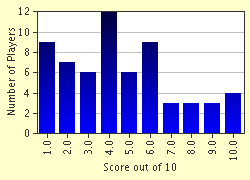Quiz Answer Key and Fun Facts
1. A couple married in 1810, and had children up to 1830, when the father died, all in the same parish.
What is the best source for finding the father's occupation?
2. Modern register entries are in English. What language might you find in Tudor and Stuart registers?
3. In an eighteenth century burial register one might see a reference to an 'Affidavit'. This refers to how the body was clothed. What was the rule at that time?
4. Someone says they found this entry transcribed from a parish baptism register:
"Jeremiah son of Hezekiah and Keziah Solomon was baptised 11th September 1752"
How do I know this was a mistake?
5. My correspondent also found these transcriptions taken from the same baptism register:
John son of John and Jane Doe baptised 21st March 1741
Jane daughter of John and Jane Doe baptised 1st April 1741.
There is no other Doe family in the parish, so what is most likely to be going on here?
6. In relation to parish registers, what are Bishops' Transcripts?
7. I found a family in the 1851 census where the father, the mother and all the children were apparently born in different parishes.
Where would you look first for the parents' marriage?
8. What happened to parish marriage registers when civil registration was started in 1837?
9. For marriages after July 1837, what reasons would there be for obtaining a photocopy from the parish marriage register - assuming you can locate the church where the marriage took place - rather than buying an official copy of the civil marriage certificate?
10. What happened to parish baptism and burial registers after civil registration started in 1837?
Source: Author
DaveJacobs
This quiz was reviewed by FunTrivia editor
Moo before going online.
Any errors found in FunTrivia content are routinely corrected through our feedback system.

